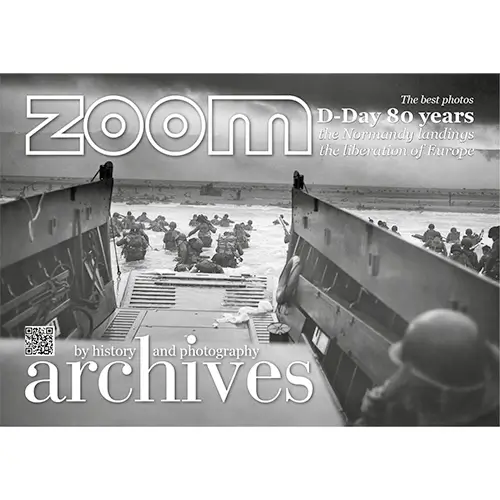In the new book of the Zoom Archives editorial series D-Day. The Normandy Landings. The Liberation of Europe - available in pdf on
FotografiaStore.it and in e-book format on all the main national and international publishing platforms - the best photos from the American state archives tell the story of the defeat of Nazism in the Old Continent. Written and edited by
Alessandro Luigi Perna for the History & Photography project, focusing in particular on D-Day on the occasion of its 80th anniversary, a decisive event for the fate of the conflict, the volume retraces the main facts of the Second World War until the defeat of Germany: the initial surrender of France, the Battle of Britain, the creation of the Atlantic Charter and the birth of the United Nations, the Battle of the Atlantic, the entry of the United States into the war, participation of American women to the conflict, racial discrimination in America and in the United States army, the persecution of the Jews, the Warsaw Ghetto uprising, the Normandy landings, the Liberation of France, Belgium and Holland, the invasion of Germany, the Battle of the Bulge, the crossing of the Rhine, the entry of the Allies into the extermination camps, the death of Hitler and the German surrender, and finally the Nuremberg trials and the birth of Israel.
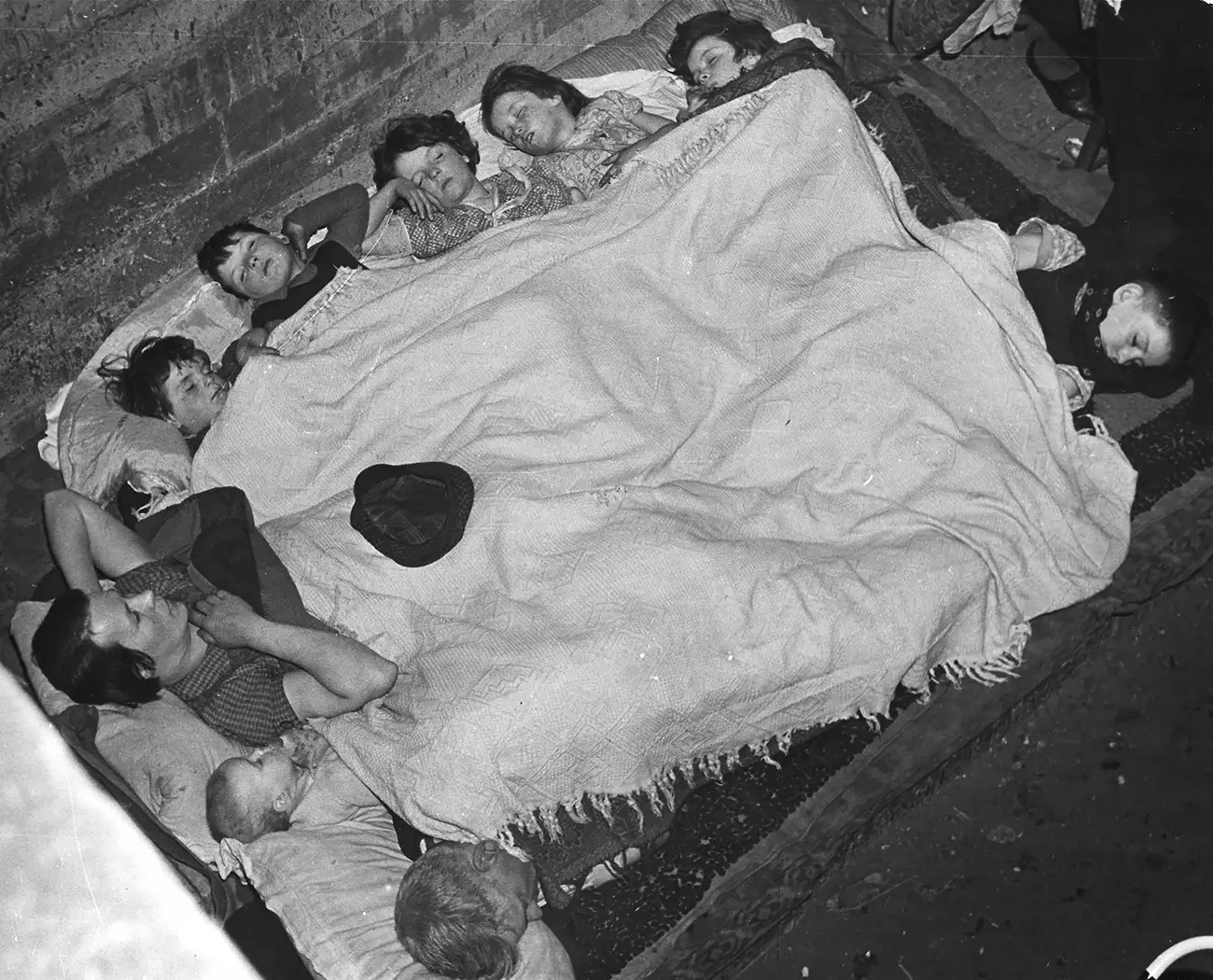
“Shoutheast Air Raid Shelter”. 1940, London, England, Photographer: unknown or not provided - Courtesy Franklin D. Roosevelt Library / U.S. National Archives
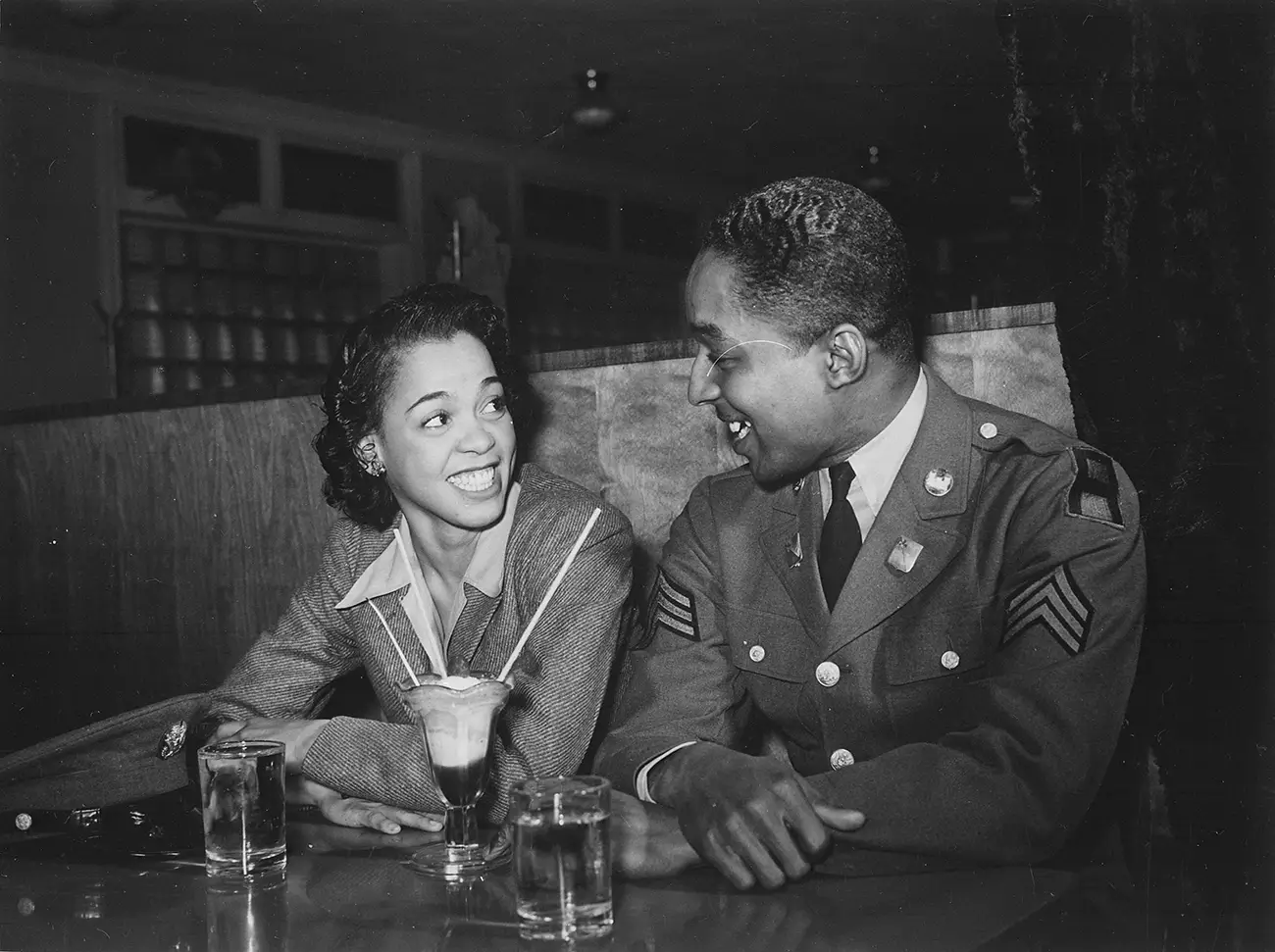
“Sgt. Franklin Williams, home on leave from army duty, with his best girl Ellen Hardin, splitting a soda. They met at Douglas High School”. May 1942 USA. Photographer: unknown or not provided Courtesy U.S. National Archives
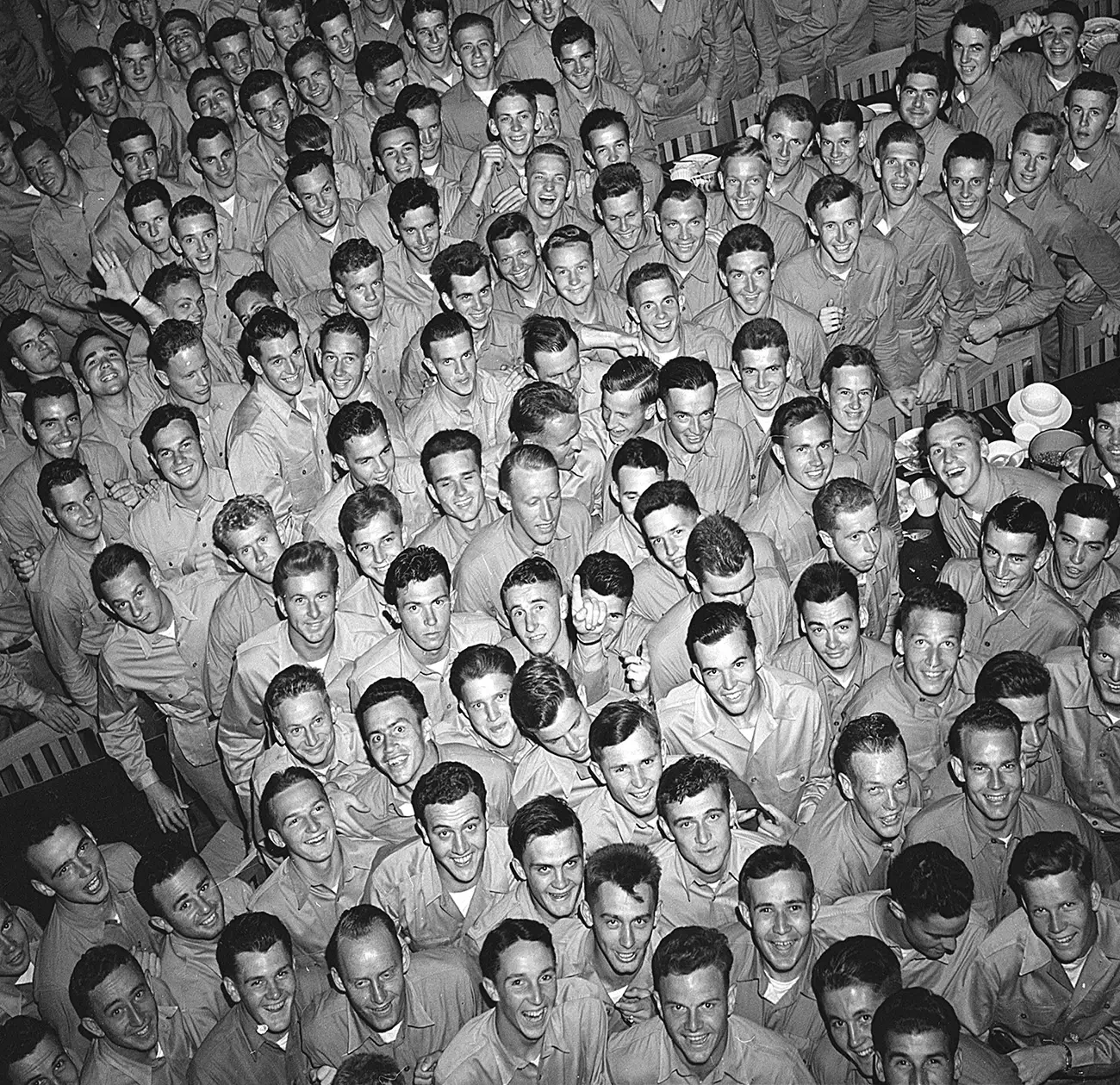
“Young men training at pre-flight school at Del Monte Hotel, Del Monte, grin as they fileout of the mess hall”. July 1943 Del Monte, Los Angeles, California, USA Photographer: unknown or not provided Courtesy U.S. National Archives
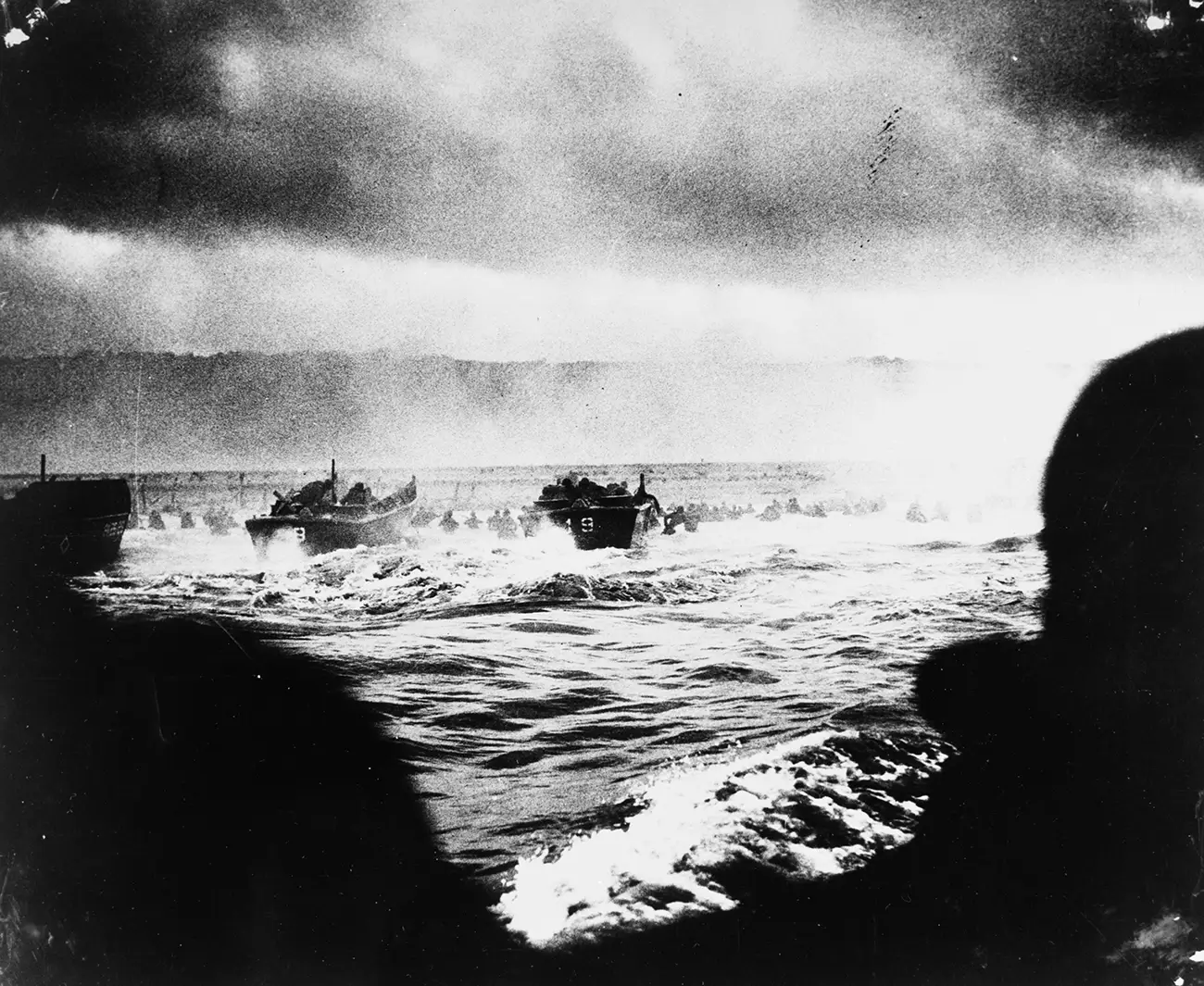
“LCVP landing craft put troops ashore on Omaha Beach on D-Day. The LCVP at far left is from USS Samuel Chase”. 6 June, 1944 Omaha Beach, Normandy, France Photographer: unknown or not provided Courtesy U.S. Coast Guard Collection / U.S. National Archives
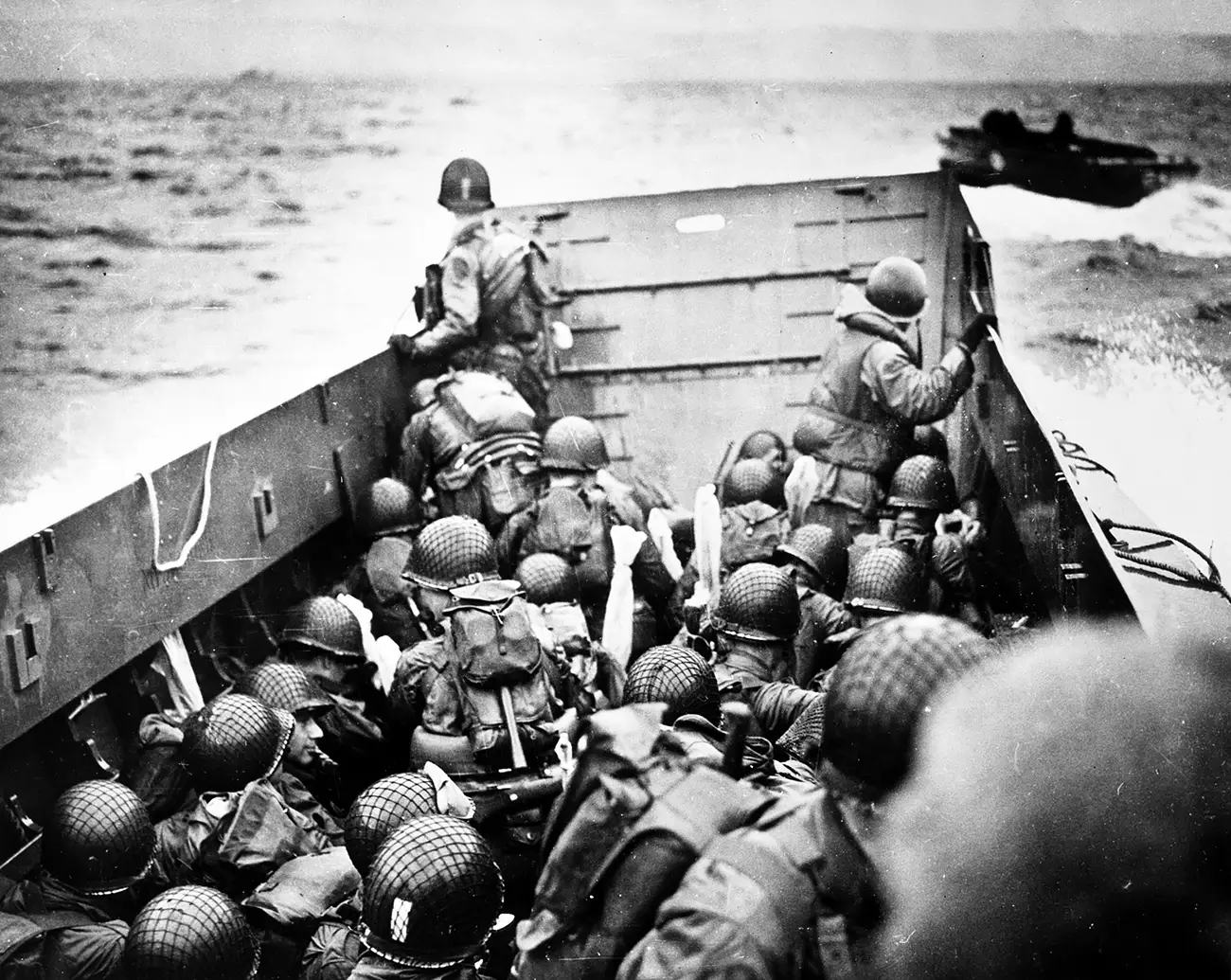
“Troops crouch inside a LCVP landing craft, just before landing on Omaha Beach on D-Day”. 6 June, 1944 Omaha Beach, Normandy, France Photographer: unknown or not provided -Courtesy U.S. Coast Guard Collection / U.S. National Archives
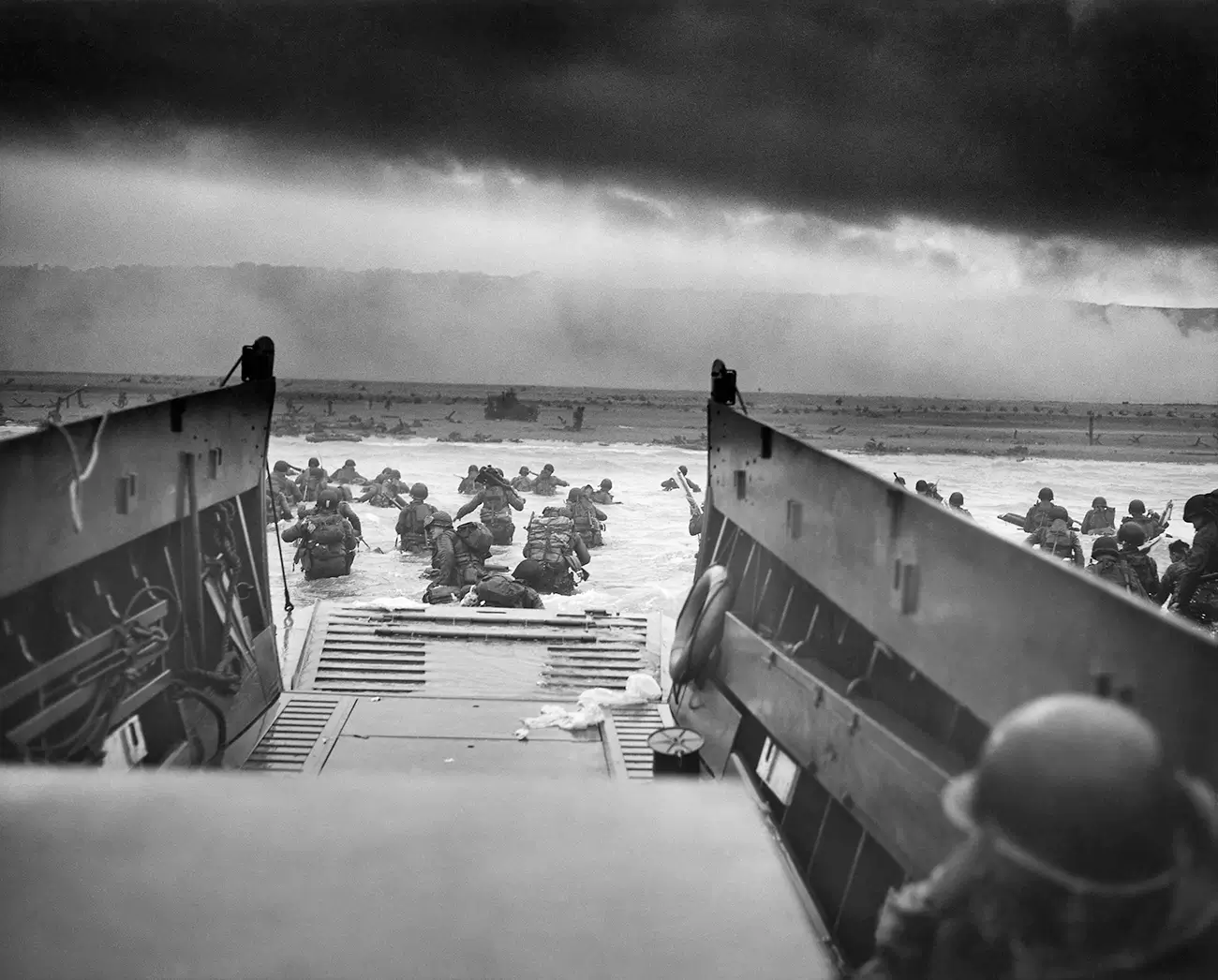
“A LCVP (Landing Craft, Vehicle, Personnel) from the U.S.Coast Guard – manned USS Samuel Chase- disembarks troops of the 1st Infantry Division (the Big Red One). American soldiers encounter the newly formed German 352nd Division. During the initial landing two-thirds of Company E became casualties”. 6 June, 1944 Omaha Beach, Normandy, France Photographer: unknown or not provided Courtesy U.S. National Archives
On the occasion of the 80th anniversary of D-Day, which took place on 6 June 1944, it is released - in Italian and English version, at €9.90 on FotografiaStore.it and in bookstores on all the main international publishing distribution platforms - D-Day. The Normandy Landings. The liberation of Europe, the new digital photographic book of the Zoom Archives editorial series created by Rodolfo Namias Editore and written and curated by the publicist journalist, passionate about history and photography, Alessandro Luigi Perna.
The volume was produced in collaboration with History & Photography, the project conceived and curated by Alessandro Luigi Perna himself which is aimed not only at the general public but also at schools and universities, offering historical photography workshops, commented photo projections and historical - journalistic - photographic itineraries in manual slide shows via the internet to be enjoyed in class or from home.
More than 200 photographs, selected among the most beautiful offered by the large American civil and military state archives and largely unknown to the general public, and a series of introductory texts created with direct and suggestive language, make up the story of D-Day and of the Liberation of Western Europe a compelling visual and literary chronicle both from a narrative and ethical and moral point of view.
D-day. The Normandy Landings. The Liberation of Europe is a book which, drawing inspiration not only from the best stylistic features of historical, news and opinion journalism but also from the most innovative principles of historical discosure of Public History, can first be read in one breath without a moment of pause and then enchants with the beauty and charm of the images that were used to create it, a visual symphony in black and white (and colour) on the Second World War that perhaps has no precedent in the publishing panorama of the last 30 years.
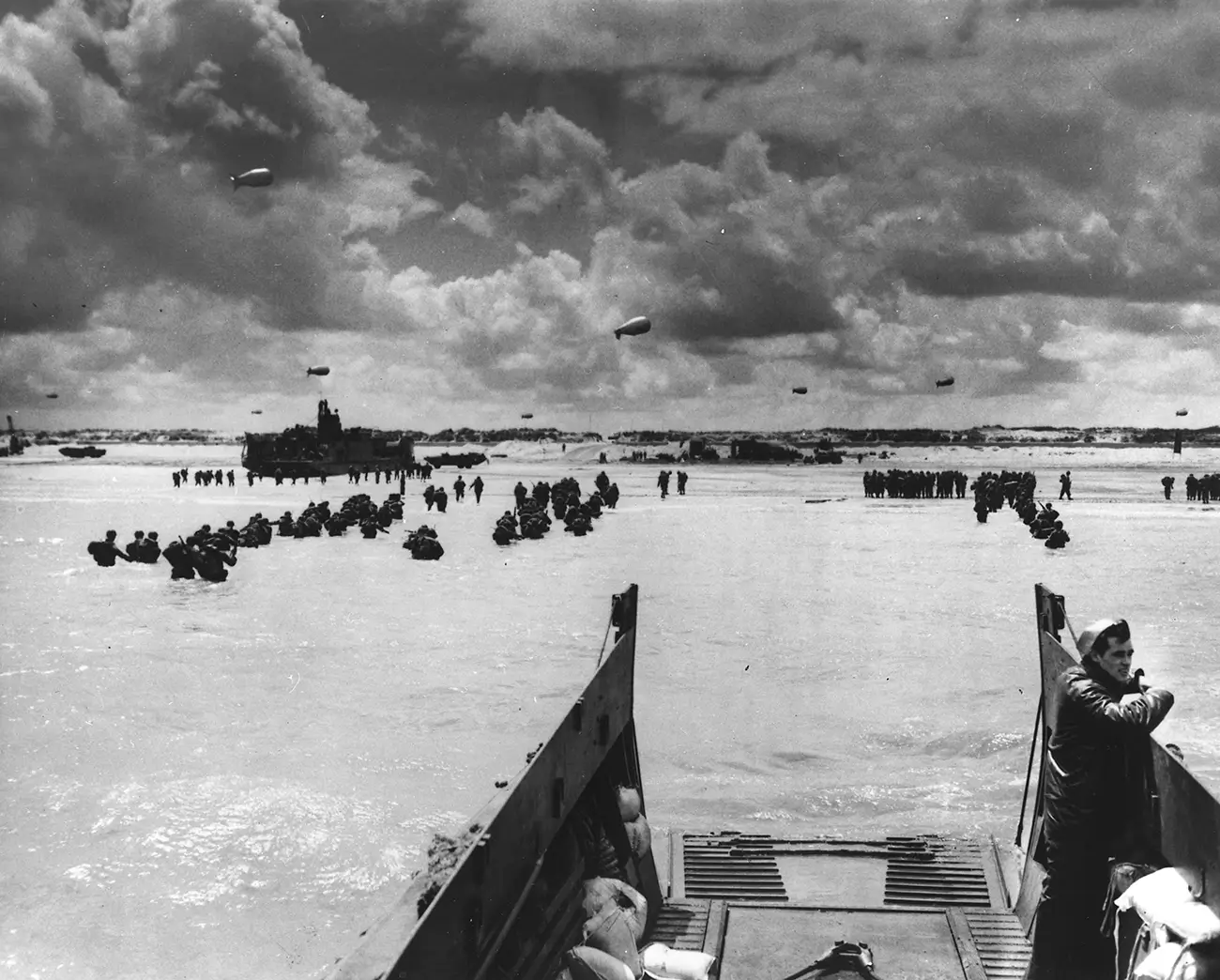
“U.S Troops land at Normandy”. circa 6 June 1944 Normandy, France Photographer: unknown or not provided Courtesy Franklin D. Roosevelt Library / U.S. National Archives
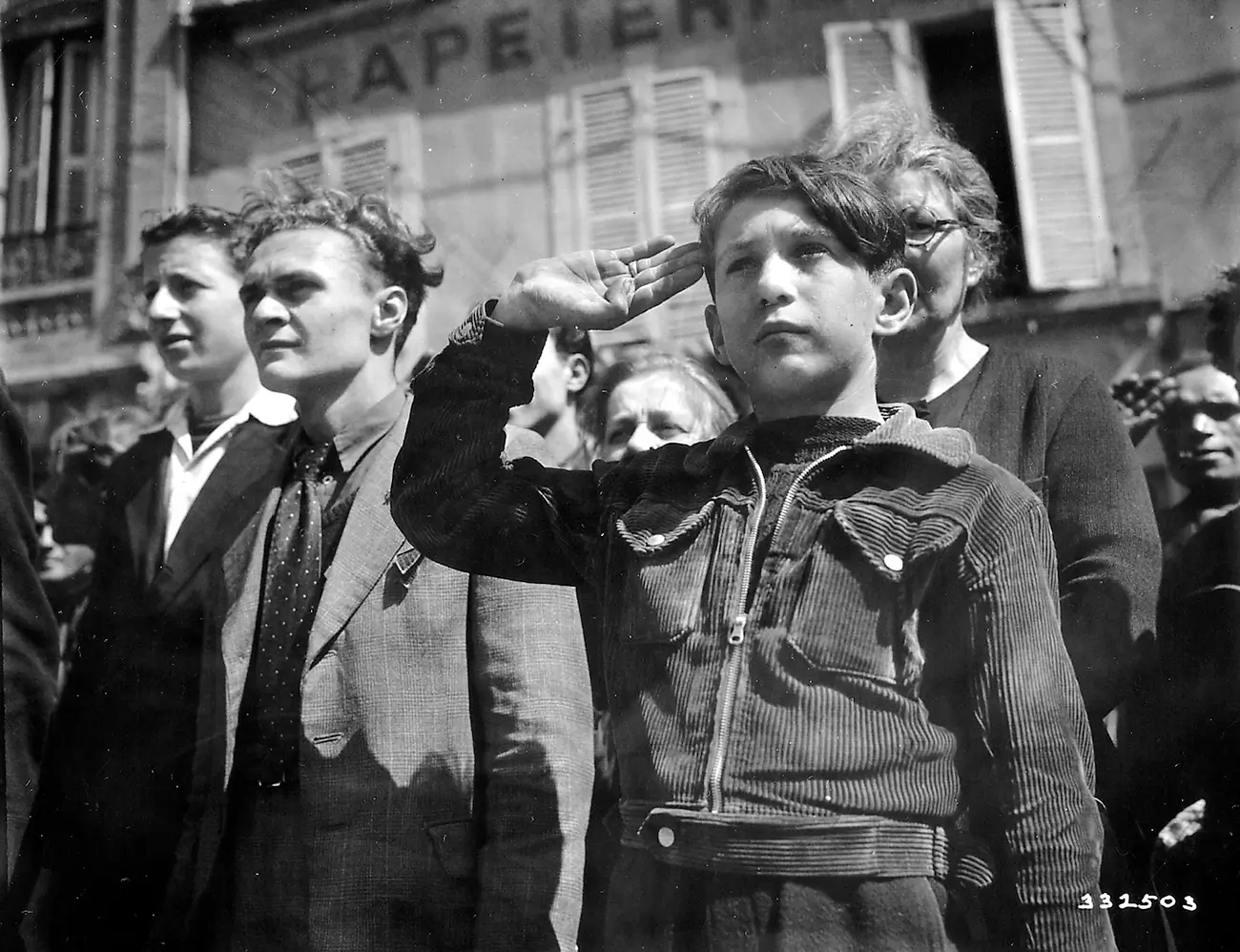
“A young Frenchman gives the military salute during the national anthem in Cherbourg in the presence of the mayor, Paul Renault, and General J. Lawton Collins, commander of the U.S. VII Corps”. 27 June, 1944 Cherbourg, France Photographer: unknown or not provided Courtesy Photos Normandie / U.S. National Archives
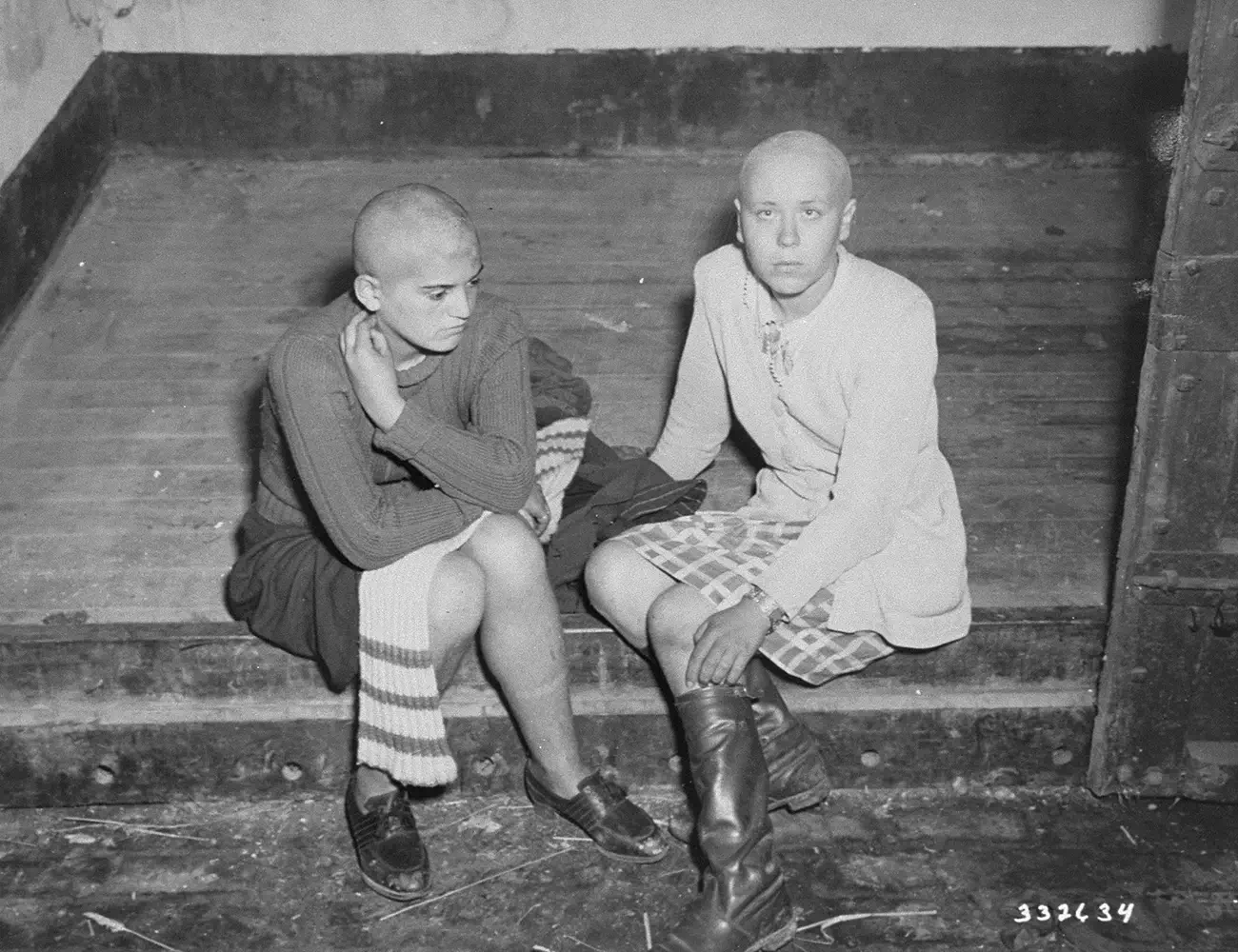
“Two young women charged with collaboration sit in a jail cell after their hair was shorn by members of the resistance”. 4 September, 1944 Le Catsau, France Photographer: unknown or not provided Courtesy United States Holocaust Memorial Museum / U.S. National Archives
At D-Day, the day of the Normandy landings which began the Liberation of Western Europe, the author arrives through a historical and narrative journey which, starting from the beginnings of the conflict, retraces the stages that led to its creation. In fact, the story begins with the fall of France and the resulting Battle of Britain and in subsequent chapters focuses on America's progressive involvement in the war.
Initially pervaded by isolationist feelings but willing to support Great Britain with means and money in its fight against Nazism, the United States, starting from the surprise Japanese attack on Pearl Harbor, became full protagonists of the Second World War and able to determine, thanks to the setting in motion of their powerful industrial military system and the conscription of millions of men, the fate of the conflict and therefore of the World.
The financing of the war, the mobilization of American women in the factories, the racial question as a weak point of the anti-Nazi narrative, the Atlantic Charter and the birth of the United Nations, the official name of the Allies during the conflict, the decision to defeat first Germany and then Japan, the Stalin question and the fear of the nascent empire of the Soviet Union, the bombing of the Third Reich, the persecution of the Jews and the Warsaw Ghetto uprising are the prelude to the events that changed the fate of the War.
The little-known Battle of the Atlantic and the massing of men and vehicles in Great Britain in view of the invasion of France and the liberation of Western Europe are the topics that delve into the preparation of D-Day, the day of the Normandy landings who entered history thanks to journalistic, cinematographic and photographic reports which immediately made it a legend in the imagination of Western culture.
The conquest of the Norman beaches and northern France, the subsequent landing in Provence which occurred more than two months later, the insurrection in Paris, the French partisan movement and the showdown with the collaborationists, the liberation of Belgium and Holland, the Battle of the Bulge, the total liberation of French territory (a chapter little attended by the general public) bring readers closer to the final phases of the Second World War.
The epilogue arrives with the crossing of the Rhine and the invasion of Germany, the discovery of the deposits of works of art stolen by the Nazis, the discovery of the extermination camps and their horrors, the liberation of the prisoners imprisoned inside them and of the slave workers in German factories. The chronicle of the final surrender, the Nuremberg trials, the denazification of Germany and the birth of Israel are the final chapters that lead to ethical and moral reflection on what it was and what consequences it had in contemporary, European and world history, the most great, bloody and ferocious ideological and military conflict of the twentieth century.
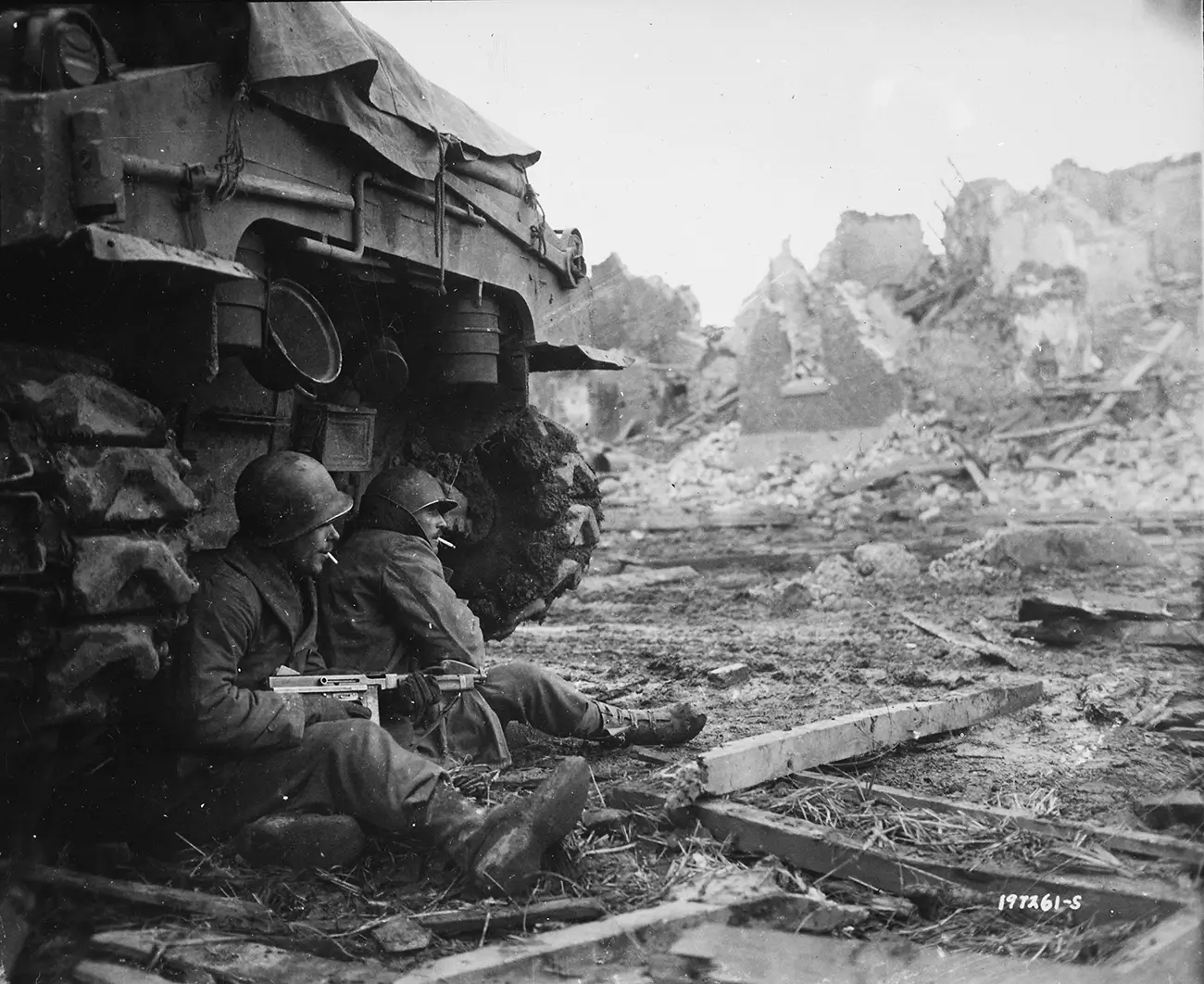
“With German shells screaming overhead, American Infantrymen seek shelter behind a tank. In the background can be seen the ruins of the town of Geich which is still under heavy shelling”. 11 December, 1944 Geich, Germany Photographer: unknown or not provided Courtesy U.S. National Archives
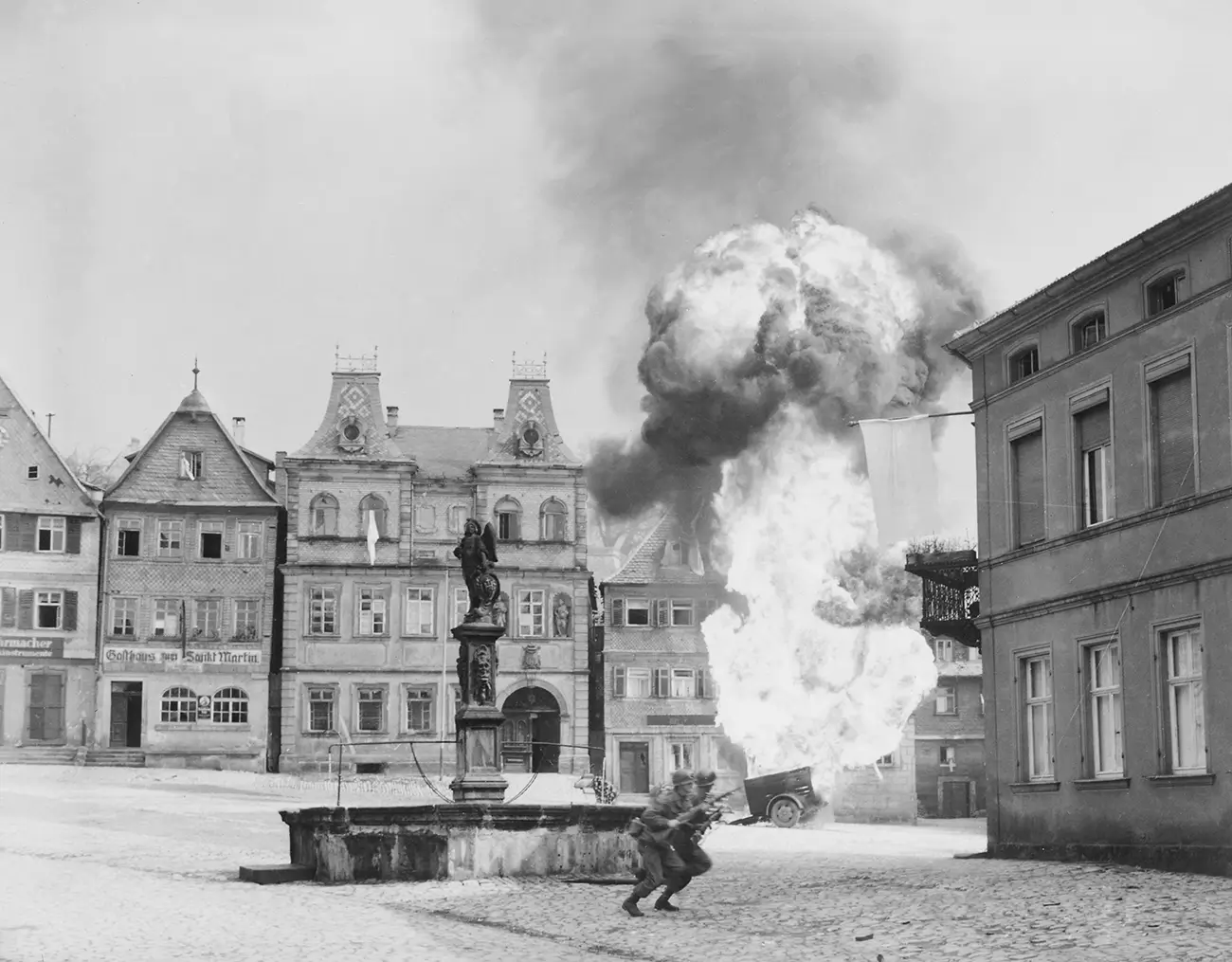
“Two anti-tank Infantrymen of the 101st Infantry Regiment, dash past a blazing German gasoline trailer in square of Kronach”. 14 April 1945 Kronach, Germany Photographer: unknown or not provided Courtesy U.S. National Archives
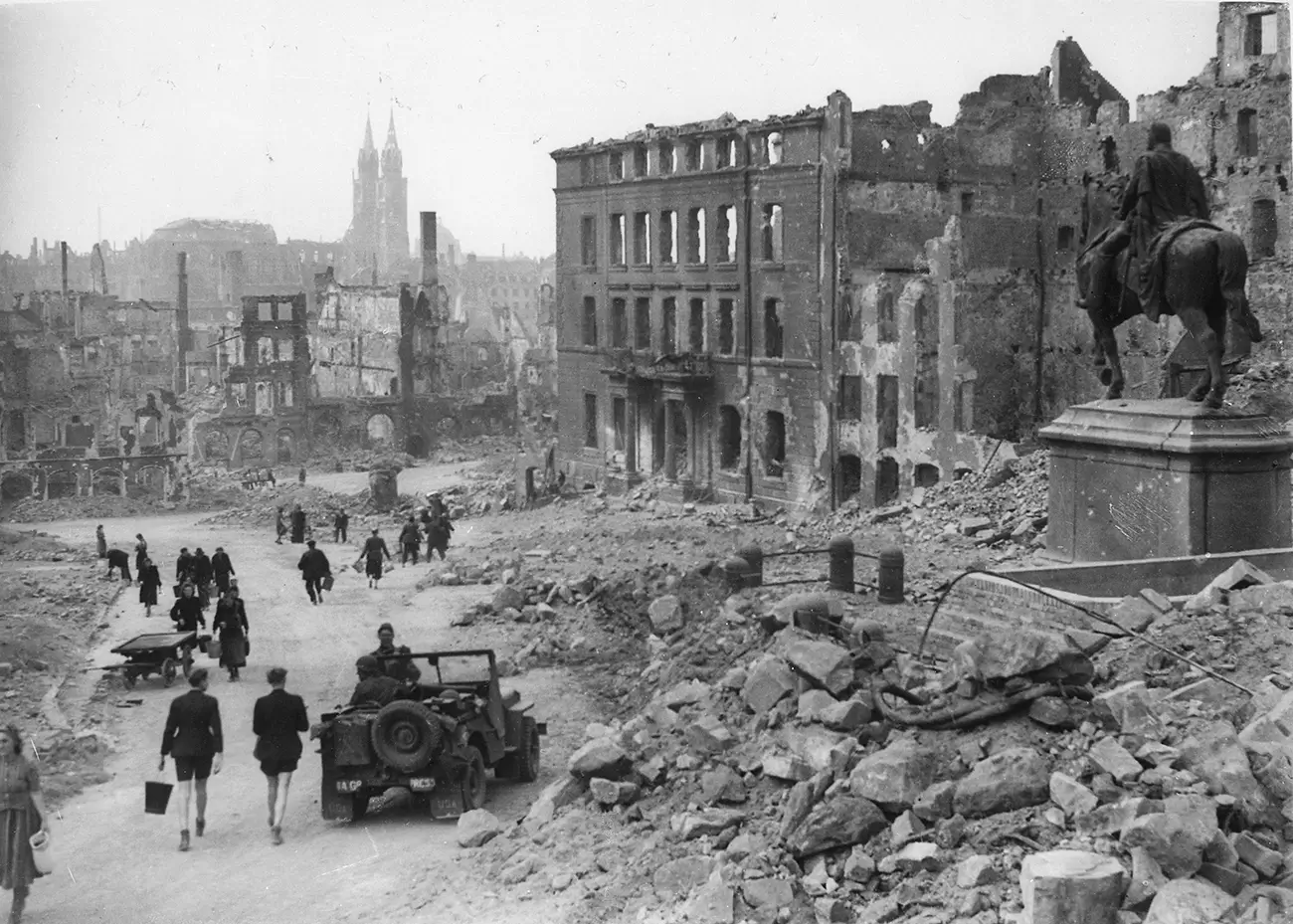
“General view of the Bavarian city of Nuremberg, following the cessation of organized resistance. In the distance, the twin-spired Lorenz Church; on the rightand surrounded with rubble is a statue of Kaiser William I”. 1945 Nuremberg, Germany Photographer: unknown or not provided Courtesy U.S. National Archives
D-day. The Normandy Landings. The Liberation of Europe is the second volume of Zoom Archives, a series of photographic books curated by Alessandro Luigi Perna and published by Rodolfo Namias Editore, the first publishing house to have offered content relating to photography in Italy starting from the now distant 1894. The volume, available in both Italian and English, follows the publication of La Liberazione d'Italia (The liberation of Italy) released in September 2023. Both titles were produced in collaboration with the History & Photography project.
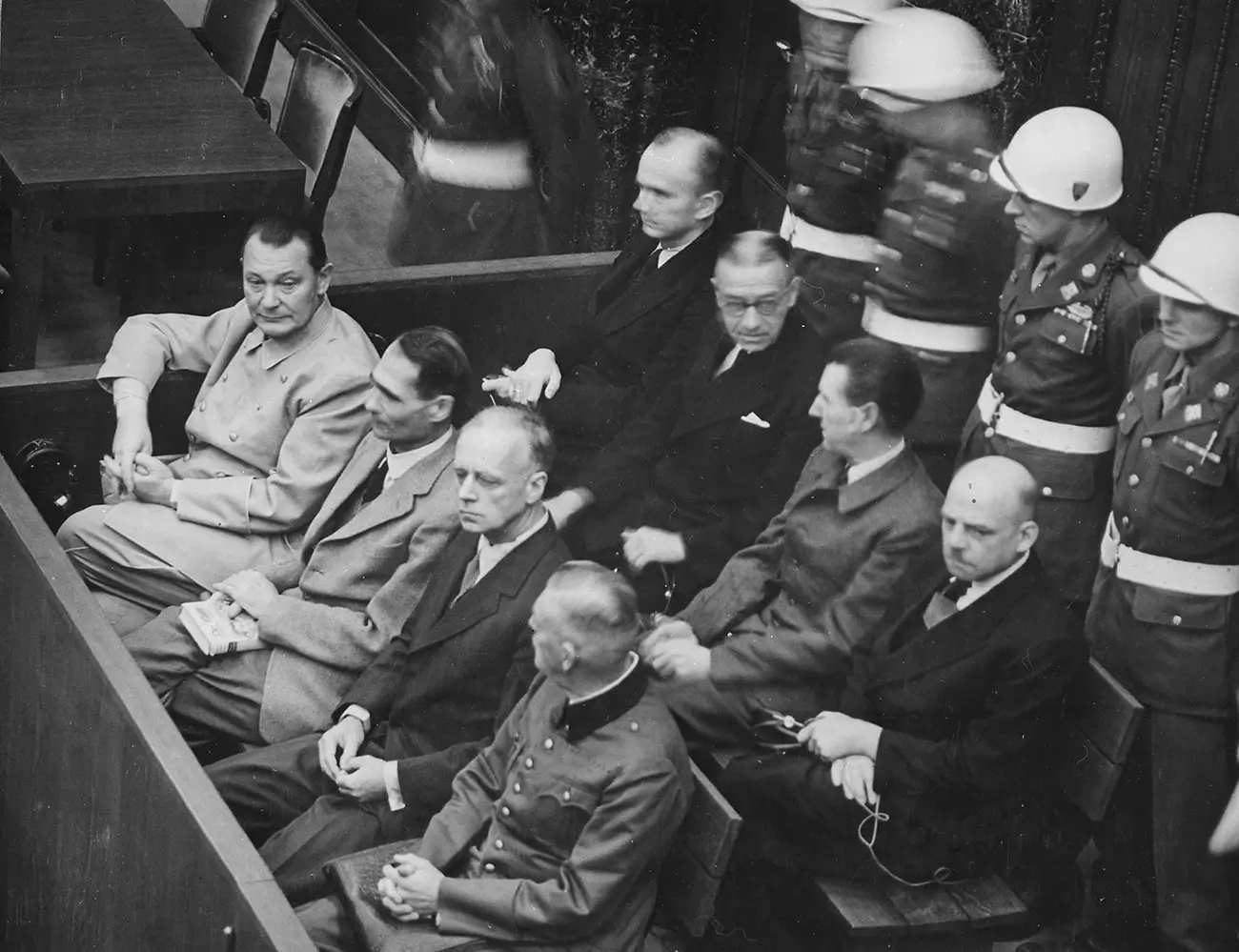
“Nuremberg Trials. Defendants in their dock; Goering, Hess, von Ribbentrop, and Keitel in front row”. 1945 - 1946 Nuremberg, Germany Photographer: unknown or not provided Courtesy U.S. National Archives
Alessandro Luigi Perna is a freelance journalist, a consultant (publishing, photography, events, communication, press office) and a curator and organizer of initiatives with both contemporary and historical photography, both aimed at the general public and at schools and universities. He also specializes in the valorisation and promotion of archives of photographers, agencies, publishing houses, museums and companies. He provides consultancy services to photographers (planning, communication, curation and organisation) and exhibition galleries (artistic direction, organisation, space management, communication).
In his CV he has many photography articles, numerous interviews with great international photographers, some photographic volumes, dozens of exhibitions held with public and private bodies, and the curation and co-curation of three festivals. He was in fact co-creator and co-curator of the first three editions of Memorandum – Festival of Historical Photography of Biella and Turin, co-curator of the photographic section of the Urbana festival in Biella and creator, curator and co-producer of All you need is photography! Unlimited Edition Photo Festival of Milan.
He has curated exhibitions at the Triennale, the Stelline Foundation in Milan, the Casa dei Tre Oci in Venice, the Museum of Contemporary Art in Lucca, the Science Museum in Turin, etc. He has created exhibitions or photo-projections with the photographic archives of Fiat, Alenia, Pirelli, Olivetti, Unione Industriali Torino, L'Europeo - RCS, Touring Club, Italian Geographic Society, Museum of the Risorgimento of Turin, Civic Museums of Pavia, University of Turin Studies – Museum of the Faculty of Anthropology, Coverciano Football Museum, etc. He has also curated exhibitions and photo-projections with numerous public and private international archives including, among others, those of the London Museums, the U.S. National Archives, Library of Congress, U.S. Navy, of the U.S. Marine Corp, of the Ministerio de Educación, Cultura y Deporte of Madrid, etc.
He has curated exhibitions of numerous photographers, living and otherwise, including Michel Comte, Cesare Colombo, Romano Cagnoni, Giovanni Porzio, Giancolombo, Frank Hurley, Gianfranco Moroldo, Santi Visalli, Guido Alberto Rossi, Roberto Polillo, etc. He promoted, supervised and coordinated exhibitions of: Werner Bischof (Magnum), Magnum (collective), Bruno Barbey (Magnum), Herman Leonard, Pino Ninfa, etc. Since 2011, with the History & Photography project, he has also told the history of photography and the contemporary world both to the general public and to school children with exhibitions and photo-projections.
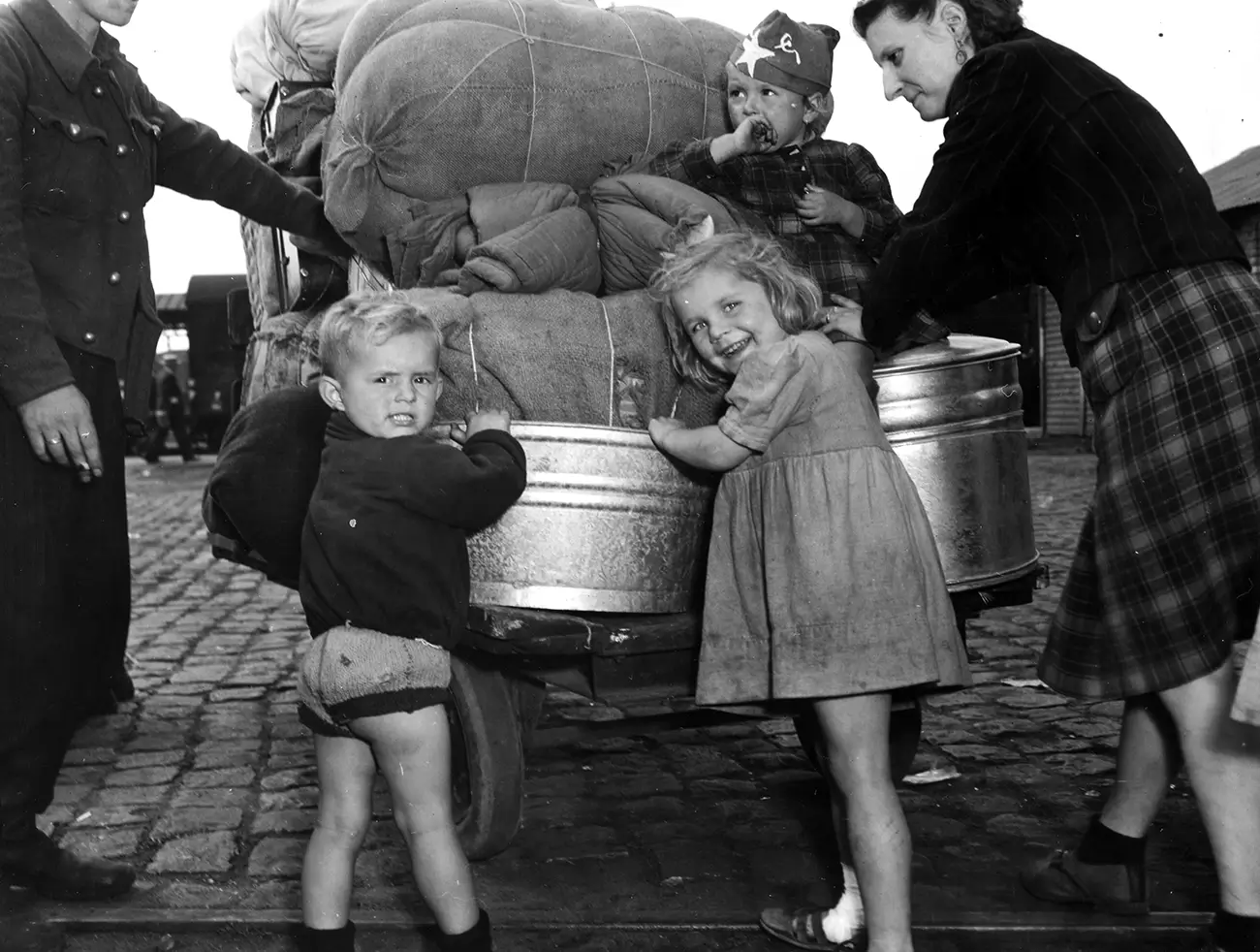
“1.500 Russian displaced nationals were taken from the D.P. center, Caserne De Cavalerie in Charleroi, and sent by train to Russian territory. Here, the whole family helps load the train that will take them home. 12 August, 1945 Charleroi, Belgium Photographer: Pfc. Stedman Courtesy: U.S. National Archives Digitized by Signal Corps Archive
Photography has been portraying and describing reality for almost two centuries now. It is from this assumption that History & Photography was born, a project conceived and curated by Alessandro Luigi Perna which has three main objectives: to create and promote exhibitions that tell contemporary history with photography (and which also tell the history of photography); rediscover and make accessible to the general public and younger people, enhancing both the narrative and documentary function of the images and their aesthetic value, the many Italian and foreign historical photographic archives, public and private, which preserve true artistic jewels often unknown even to professionals; support with the instrument of photography, and the point of view of photoreportage in particular, the teaching of History in Schools and Universities with already pre-established paths of around 50-70 images to be used for historical photography workshops, photo-projections commented by the live or to be used via the internet in class during lessons or from home for students' in-depth analysis. The photographs are often equipped with texts that address the various historical topics with a journalistic and documentary slant.
